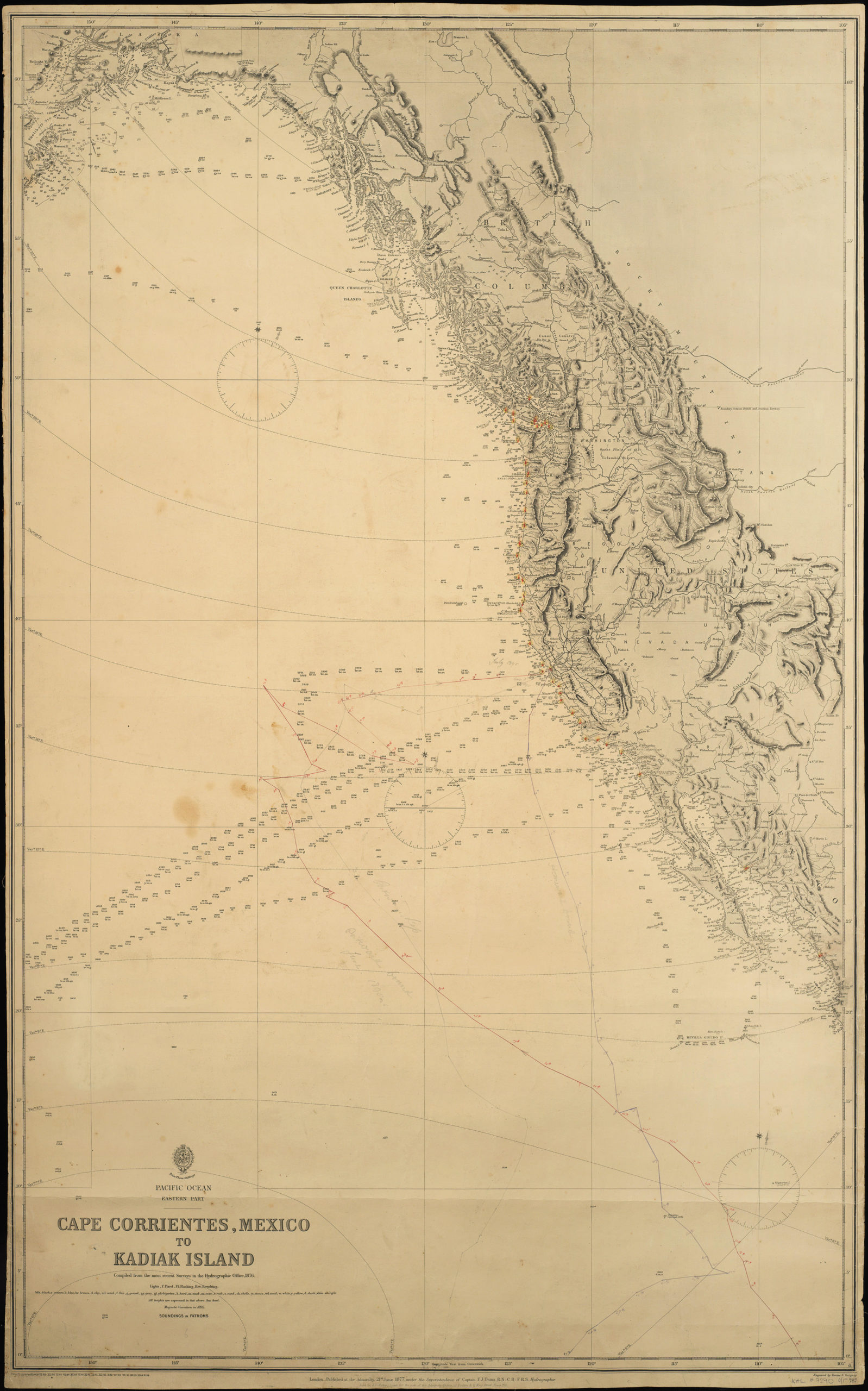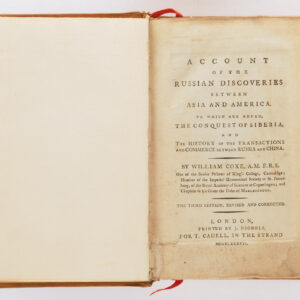Remarkable 1762 coast-to-coast map of Canada, Upper Midwest & Plains.
A Map of Canada and the North Part of Louisiana with the Adjacent Countrys
Out of stock
Description
Fine example of this detailed map of Canada and the northern part of the United States, extending from the Gulf of St. Lawrence to the Pacific Ocean.
One of the few 18th century maps of Canada to extend from the Atlantic to the Pacific. The map is of particular note for its inclusion of information from indigenous Indian Tribes, including a reference to the Ochagach, one of the two most famous Indian map sources for this region.
There are numerous other Indian references at the headwaters of rivers, including a track extending from Ft. Huillier, just west of the modern location of Minneapolis, to the Padouca Villages on the Upper Missouri River and a number of forts constructed by the English and French to trade with or defend against Indians in the region.
Along the Pacific Coast, a number of real and mythical features are shown, including:
• The Land which is supposed to be the Fou-Sang of Chinese Geographers
• Details from the apocryphal voyages of Admrial Font and Martin d’Aguilar
• The coastlines mapped by Vitus Behring and Captain Tchirikow.
• The Spanish sighting of the Sierra Nevada mountains in 1542, just north of San Francisco Bay.
The Indian Explorer Ochagach
At the headwaters of the Assinboies or St. Charles River, there is a reference to Ochagach, “Hereabouts are supposed to be the Mountain of Bright Stones mention’d in the Map of the Indian Ochagach.”
The legend of Ochagach apparently began in 1728, with the report of an Indian by the name of Ochagach who described a journey to a great lake west of Lake Superior, with a river flowing from it to the west toward the sea. The noted French mapmaker Philippe Buache would ultimately report this story and create a sketch map, made by the “Savauge Ochagache” and others, which depicts a continuous water route from Lake Superior in the east, to Lac Ouimpigon (Winnepeg) and the “Fl. de l’O” (River of the West).
As noted by Don McGuirk in his work on the Sea of the West, the Buache map is “important for being one of the few printed examples of manuscript Native American cartography. This second, smaller map is found above the first and is titled Réduction de la CARTE tracée par le Sauvage Ochagach et autres,/ laquelle a donné lieu aux Découvertes des Officiers François representées dans la Carte cy jointe.”
Buache’s map derives from a manuscript map and report made by French Canadian fur trader and explorer Pierre Gaultier de Varennes et de La Vérendrye (see above). In 1727, La Verendyre was the commanding officer of Fort Kaministiquia at Thunder Bay, Lake Superior. At this time, the French were actively seeking a portage or other water course which would take them to the Sea of the West or River of the West, both of which had been described and hypothesized by French explorers of the late seventeenth and early eighteenth centuries. In the winter of 1728, La Verendrye received reports from the Cree Indians of the regions to the west. One informant, a Cree Chief named Tacchigis, described a great river of the west, as well as the Missouri River Valley, persuading La Verendrye of the necessity of mounting an expedition.
In preparation for the journey, La Verendrye arranged for a Cree guide (Ochagach) to lead the expedition. Ochagach drew a map of a canoe route from Lake Superior to Lake Winnepeg, with a note referencing the River of the West at its western extremity. In the same winter, La Verendrye reported a second group of Cree Indians visiting the fort whose leader, La Marteblanche, produced a nearly identical map. La Verendrye created a composite map from these three sources which was transmitted with his report of his discoveries first to the Governor of Canada and then on to France in 1730.
Rarity
The present map is quite rare on the market in two sheets. A one sheet version, lacking the western sheet, appears more frequently. This is only the second example we have seen with both sheets present.
Cartographer(s):
Thomas Jefferys (c. 1710-1771) was one of the significant commercial cartographers in London in the middle of the 18th century. He issued many maps, but Braddock Mead’s American maps, particularly Map of the Most Inhabited Part of New England (1755), stand as his greatest successes. Even though Jefferys was not an actual compiler of maps himself, his skills as an engraver and, perhaps more importantly, in entering the right commercial partnerships soon established him in cartographic circles.
Jefferys’s origins and beginning in the map trade are somewhat obscure. From around 1735, we know he apprenticed as an engraver with the famous English map maker Emmanuel Bowen. Once trained, he worked as an engraver for several London publications, usually on map-related projects. Jefferys increasingly gravitated to his projects and gradually became a publisher and engraver, primarily of maps. In 1746, he was appointed geographer to the Prince of Wales, which meant that at his ascension to the throne fourteen years later, Jefferys became Royal Geographer to King George III. In real life, these titles conferred a reputation as a tradesman favored by the court; they did not entail a salary or specific commissions per se. By 1750, his position and hard work allowed Jefferys to move to new and larger premises at Charing Cross in central London.
The Seven Years War (1756-63), a British-French conflict fought in Europe, America, and South Asia, created a boom in the demand for maps. Jefferys was ideally positioned to respond to this demand. During those years, maps of the Americas became especially popular, and with John Green (Mead) in his fold, Thomas Jefferys produced the very best of these on the market. In general, Jefferys took advantage of the increasing demand. Indeed, two of his maps – both compiled by Braddock Mead/John Green – are among the most influential maps ever made of the British colonies in America. Jefferys’s maps were in sync with public sentiment. He displayed a strong position against French territorial claims when war with France loomed. This was not particularly controversial since the French policy of encircling and encroaching on the English colonies was considered a real threat, but it did help his business.
With the war’s conclusion in 1763, demand waned, and having lost his best in-house cartographer; things were not looking up. In 1765, following several self-funded county surveys in England that Jefferys had hoped would save him financially, his publishing house went bankrupt. By joining forces with Robert Sayer of London, another publisher specializing in maps, he attempted a final come-back in 1768 by publishing his General Topography of North America. In this impressive atlas, Jefferys reissued 93 American maps and charts in 106 sheets, including the third and final state of Mead’s seminal map of New England. While the atlas enjoyed some commercial success and stands as a pivotal publication in the repertoire of American cartography today, it was not enough to save him. After Jefferys died in 1771, Robert Sayer purchased the remaining plates from Jefferys’ estate and used them to reissue maps with John Bennet.
Condition Description
Two sheets joined (the western sheet often not seen with this map).
References
McGuirk, Donald L. The Last Great Cartographic Myth: Mer de l'Ouest. Cambridge, MA: MapRecord Publications, 2011.




